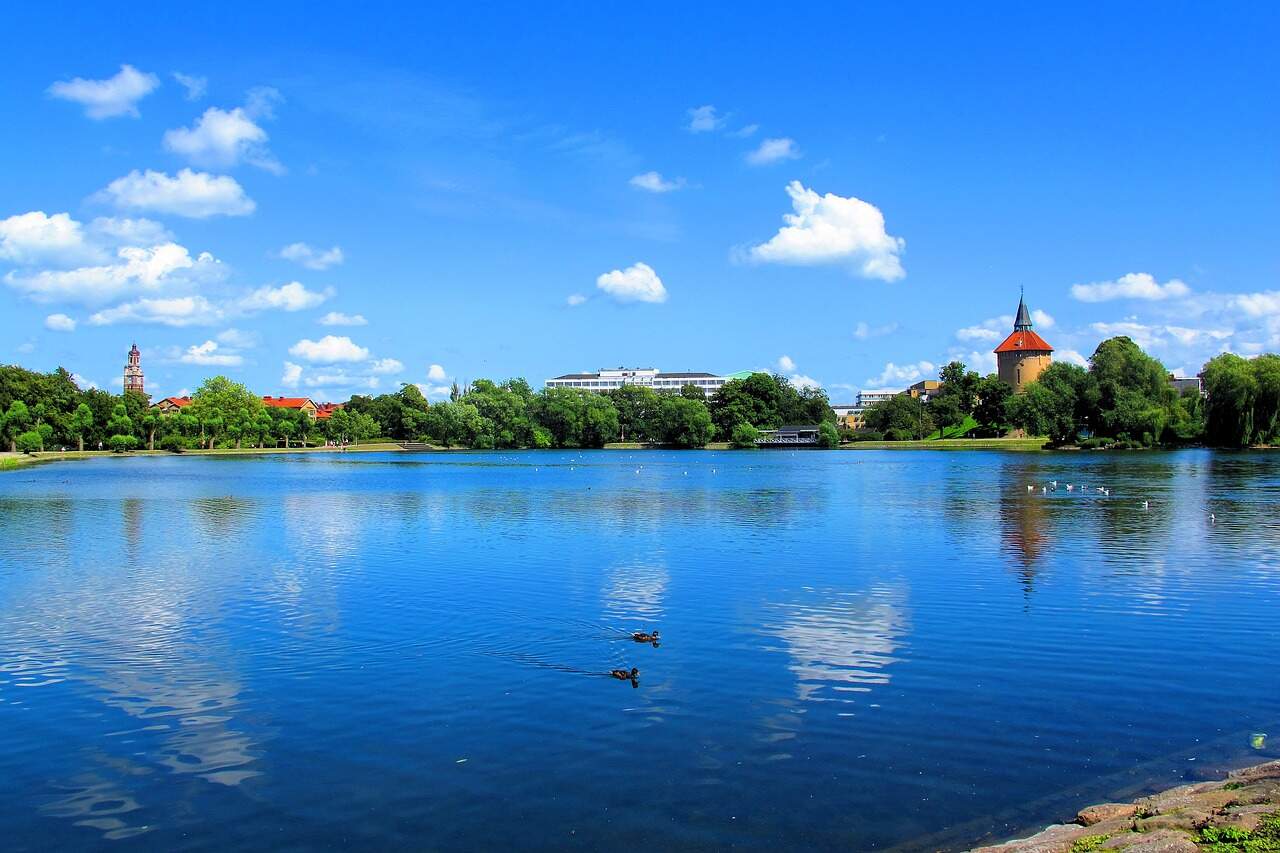The environmental mantra of Malmö sounds simple: it should be easy for the city’s residents to make climate-smart choices.
By Kassia Rudd
The environmental mantra of Malmö sounds simple: it should be easy for the Swedish city’s residents to make climate-smart choices.
Local targets, however, are anything but easy: reducing Malmö’s climate impacts, greening its urban environment, and enriching local biodiversity and ecosystem health – all by 2030.
The city is an early adopter of the Malmö Commitment, which includes commitments to placing people and social equity at the core of local sustainable development; promoting safe and healthy urban spaces and communities; and prioritizing human and environmental health at the same time.
But what does achieving these targets look like in practice? According to Helen Nilsson, project manager at the city’s Environment Department, the key is to coordinate a multi-pronged approach to invest in biodiversity, resilience, and community buy-in that emphasizes locals’ nature-connectedness.
“People think of green infrastructure and they think of green walls, roofs, and water management systems. But it’s meadows and trees and butterflies, it is all of that as well, the softer side,” Nilsson says.
“If you change people’s perception, they start seeing connections. Of course we need more flowers, of course we should have longer grass,” she adds.
Shouldn’t the focus be on behavioral changes that reduce environmental impacts, though?
While the effect of changes in behavior on environmental outcomes shouldn’t be underestimated, nature-connectedness plays a pivotal role in encouraging people to adopt behavior changes as high levels of nature connectedness are associated with pro-environmental attitudes and behaviors.
What’s more, nature-connectedness is not a fixed attribute: it can be increased through education and positive, formative experiences with the outdoors. A close tie to nature has meaningful benefits for humans too,as it has been shown to improve mental health and emotional well-being.
Nilsson says herperspective is borne of experience and peer-reviewed research, but it is also a situational necessity. The environmental department has no mandate over land and is limited to persuading the right people at the right time within the government and the community.
Guidance for community outreach, co-creation, and integrating nature-based solutions (NBS) into city plans has come from the EU-funded Horizon 2020 Project CLEVER Cities. Malmö is an active project participant, co-leading a group of six cities that are developing Urban NBS Plans in partnership with members of their most vulnerable communities.
The goal is to develop locally-tailored Nature-based Solutions Roadmaps that chart the path of a co-creative process towards implementing NBS and mainstreaming urban nature as a priority at resident, legislative, and political levels.
CLEVER Cities Malmö has focused its efforts on the neighbourhood of Lindängen, where residents have proposed planting an edible green strip with the aim of increasing biodiversity, making the area more attractive, and bolstering public safety.
The city has also built environmental education into city-wide events such as World Bee Day and the Malmö Garden Show, and made resident action easy by providing wildflower seeds and guides for urban gardening in balconies and yards.
Change has occurred not only on the personal level, but on the business side as well: two local housing companies are taking steps to diversify the green space surrounding their units. Because funding is limited, involving local residents, raising awareness, and learning from partner cities has been essential to Malmö’s work in Lindängen.
“We need to spread knowledge and increase understanding. It isn’t enough to work with municipalities, you need to work at the grassroots level. Otherwise, no one is going to be asking for urban greening. It is essential to work towards increased NBS from all angles,” Nilsson stresses.
However, Malmö’s work to reduce human impacts on the environment, increase community resilience, and foster knowledge exchange is not limited to CLEVER Cities. In May, Malmö was announced as Sweden’s newest Making Cities Resilient 2030 (MCR2030) resilience hub.
In this role, Malmö serves as a nexus for knowledge exchanges between cities in the region interested in building resilience via nature-based solutions into local planning documents. Malmö is also an active member of ICLEI-Local Governments for Sustainability, a global network of more than 2,500 local and regional governments committed to sustainable urban development that offers members co-learning opportunities and expert guidance.
It isn’t hard to see how education plays a fundamental role at all levels of Malmö’s sustainability initiatives. The city’s work with ICLEI and CLEVER Cities plays a particularly vital role in fostering the Lindängen community’s connection to urban nature.
Strong nature-connectedness in turn makes it easier and more appealing for residents to choose climate-smart and biodiverse interventions at home and on the ballot. Malmö’s environmental education and international partnerships are an important step towards fulfilling the city’s mantra of making sustainable living easy.
Kassia Rudd is a communications officer at ICLEI Europe with an interest in the intersection of land management, public health, environmental protection, food production and other sustainability-related issues.
This story first appeared on Sustainability Times
© 2022 Sustainability Times.
This article is licensed under a Creative Commons Attribution-ShareAlike 4.0 SA International License.












